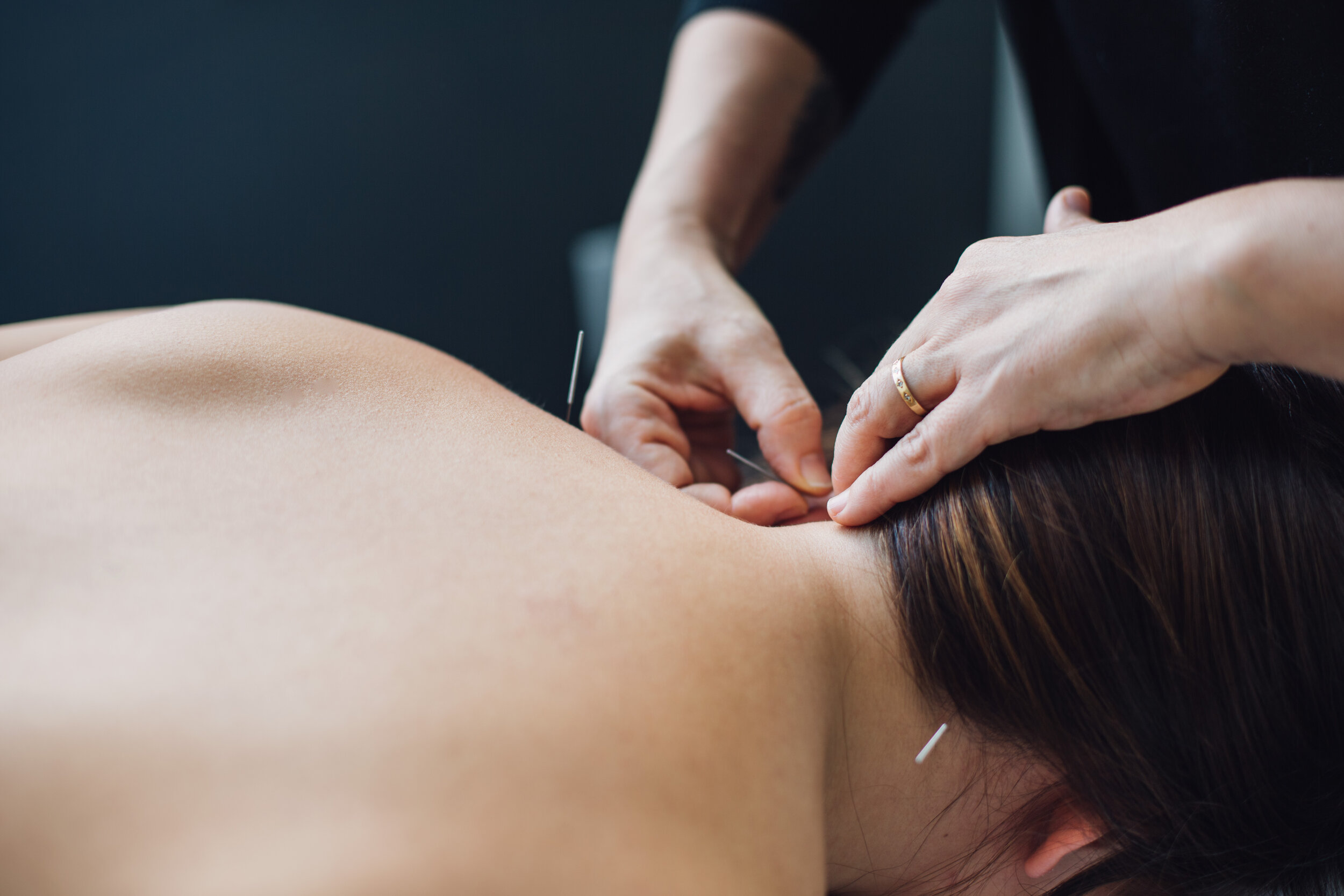
Acupuncture
Acupuncture is one of the oldest and most commonly used medical procedures in the world. This treatment modality encourages the body to promote natural healing and to improve functioning. The insertion of very fine, sterile, single-use needles into precise acupuncture points on the skin aids in the stimulation and smooth flow of energy (Qi) and blood. Electro-stimulation and cupping techniques, as well as warming moxibustion, are also used in combination to enhance desired healing outcomes. According to Chinese Medicine theory, the human body consists of 20 meridians; 14 of which have acu-points situated along them. These acupuncture meridians conduct the body’s Qi between the surface of the body and the internal organs and tissues. If the Qi does not flow properly, the meridians become blocked and thus illness results. Acupuncture works to regulate the flow of qi and blood through the meridians, thereby nourishing organs and tissues, opening blockages, relieving pain and calming the mind. Acupuncture is commonly known to be effective in treating pain disorders and is also used for a wide range of internal problems.
Although acupuncture is virtually painless, it is encouraging for some needle sensations to be felt by the patient in order to realize the maximum benefits of the needles and their placement. Many people find acupuncture to be quite relaxing and either fall asleep during the treatment or have a strong desire to sleep once the treatment is over. Patients are advised to take it easy after an acupuncture treatment and should not undertake in any strenuous activities, such as working out at the gym, for at least a few hours.
Acupuncture therapy has been safely and effectively tested in controlled clinical trials in recent literature for a variety of diseases and disorders.



